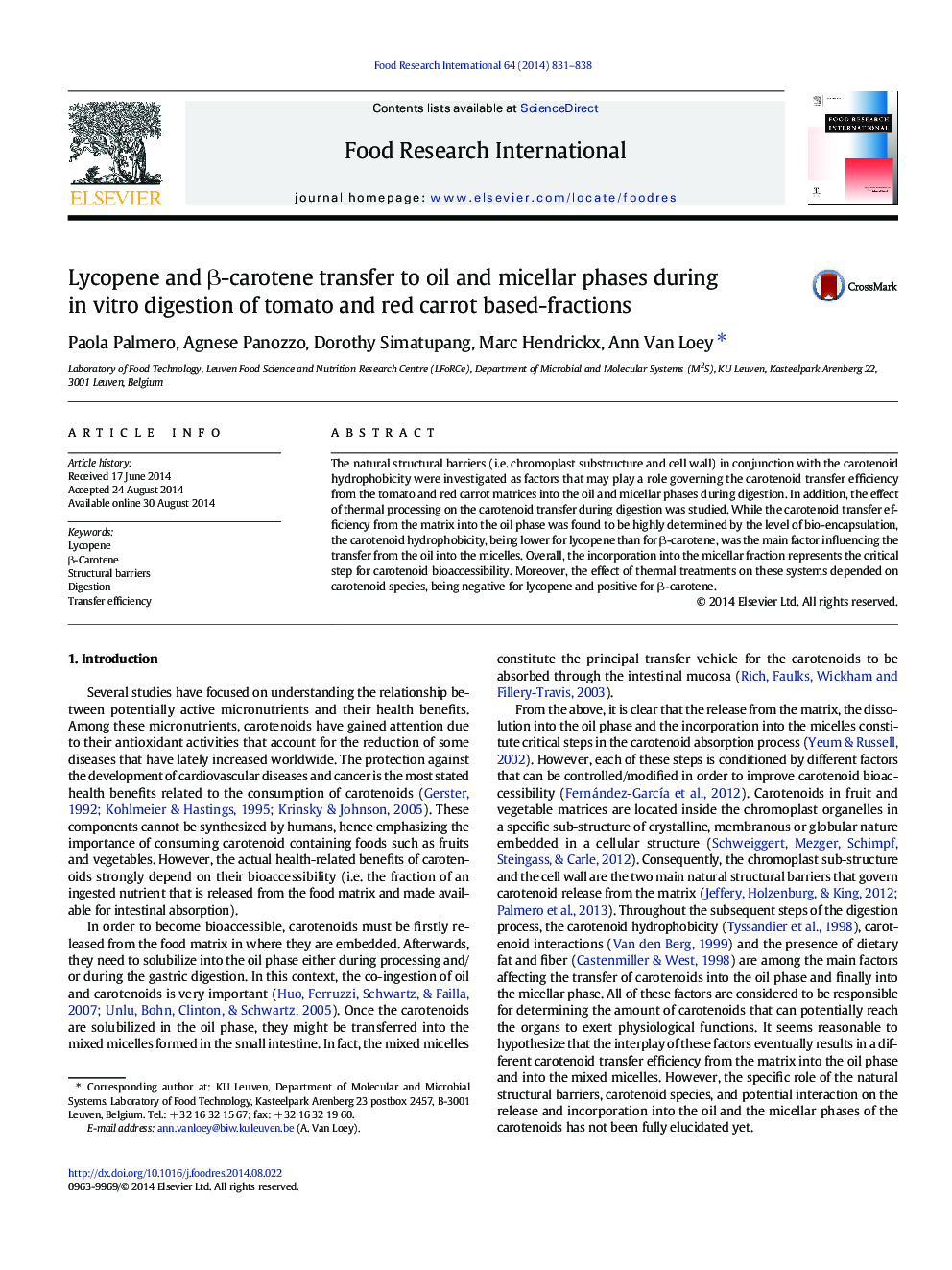| Article ID | Journal | Published Year | Pages | File Type |
|---|---|---|---|---|
| 6396767 | Food Research International | 2014 | 8 Pages |
Abstract
The natural structural barriers (i.e. chromoplast substructure and cell wall) in conjunction with the carotenoid hydrophobicity were investigated as factors that may play a role governing the carotenoid transfer efficiency from the tomato and red carrot matrices into the oil and micellar phases during digestion. In addition, the effect of thermal processing on the carotenoid transfer during digestion was studied. While the carotenoid transfer efficiency from the matrix into the oil phase was found to be highly determined by the level of bio-encapsulation, the carotenoid hydrophobicity, being lower for lycopene than for β-carotene, was the main factor influencing the transfer from the oil into the micelles. Overall, the incorporation into the micellar fraction represents the critical step for carotenoid bioaccessibility. Moreover, the effect of thermal treatments on these systems depended on carotenoid species, being negative for lycopene and positive for β-carotene.
Related Topics
Life Sciences
Agricultural and Biological Sciences
Food Science
Authors
Paola Palmero, Agnese Panozzo, Dorothy Simatupang, Marc Hendrickx, Ann Van Loey,
